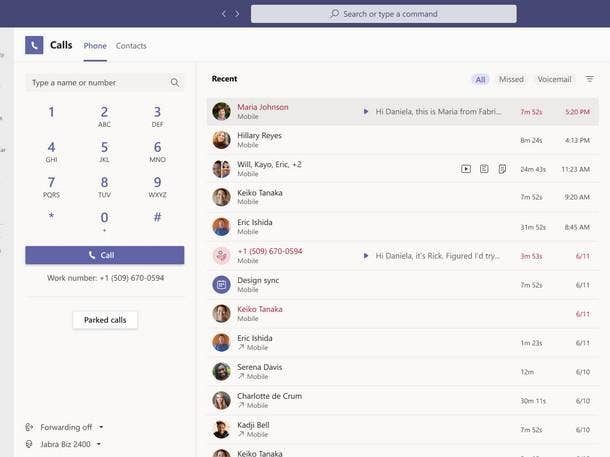Microsoft Seeks To Ramp Up Teams Calling With Array Of New Features
The moves will allow Teams to gain greater feature parity with other PBX phone systems, one solution provider tells CRN.

Microsoft is pushing forward on the development of new features for Teams Calling as the company seeks to compete more vigorously with existing phone system options.
While the Teams collaboration app can be used for VoIP audio calls between Teams users, Microsoft also offers an option to add a full phone replacement within Teams, which uses the Public Switched Telephone Network.
[Related: Confronting Covid-19: How Partners Made Zoom, Microsoft Teams And Cisco Webex Essential Viewing]
Microsoft announced updates on Tuesday both for calling within the Teams app and for the full cloud-based Teams phone system.
“Having Microsoft obtain more of a feature parity with other PBXs (private branch exchanges) is always welcomed,” said Ron Jones, practice director for Microsoft modern productivity at St. Louis-based solution provider Perficient, in an email to CRN. “With advancements of direct routing and media optimization they are definitely making it easier than ever to switch over to Microsoft’s Phone System.”
Perficient, No. 55 on the 2020 CRN Solution Provider 500, has been among the early Microsoft partners to dive into the Teams Calling opportunity. “We are seeing an increase in Teams Calling conversations and opportunities in every industry and every geography,” Jones said.
Key updates announced by Microsoft on Thursday for Teams calling include a new “streamlined calling experience.” The feature brings crucial calling elements such as the dial pad, call history, voicemail, contacts and settings into one central location, Microsoft said.
Additional features announced by Microsoft include the ability to save call recordings in OneDrive and SharePoint, CarPlay support, spam identification and call merge. In early 2021, users will also get the ability to transfer calls between mobile and desktop using an interface in the Teams app, Microsoft said.
“As a user, I’m very happy to see refinements such as CarPlay support, call merge and transfers between mobile and desktop,” Jones said. “Being a parent, any given meeting may start at my house, transition to the car, and end at my office.”
Microsoft also announced new capabilities for Teams Calling that are geared toward more advanced business needs.
Those include the introduction of certified Contact Center solutions with Teams Calling, so that contact center providers can seek certification of their solutions with Microsoft. That will help “provide customers with the confidence needed to manage important customer interactions,” Microsoft said in a blog post, noting that many solutions will be certified by early 2021.
“As a service provider, it’s great to see Microsoft close the gap in the Contact Center space. This was especially prohibitive to those using Skype (and Skype-related add-ons) for their call centers, and it slowed down many of our customer’s journeys from Skype to Teams,” Jones said. “Seeing advancements in calling center capabilities has been a breath of fresh air. This was one of the biggest pieces holding many customers back from using Microsoft’s Phone System due to the lack of support around contact centers.”
Meanwhile, Microsoft announced additional features such as the ability to integrate call queues into a team channel, which gives customers “an easier way to collaborate within a team and gives them flexibility with how they want to manage the queue without administrator intervention,” Jones said. “I am not aware of any other platforms that have this capability, so features like these really make Microsoft Teams Phone System stand out.”
The feature will be available in preview in early 2021, Microsoft said.
Ultimately, Jones said the moves are a step in the right direction as businesses and users continue to adapt to the working conditions brought on by the COVID-19 pandemic. Usage of Teams has surged during the crisis, with daily active users growing to 115 million as of late October, up from 44 million in mid-March.
That has included a huge jump in Teams Calling, with the number of calls growing 11X between March and October, Microsoft said.
“In the spring, everyone made video calling a major focus, customers and consultants alike. It helped many of us provide resiliency in our everyday collaboration and productivity,” Jones said. “Although video is still important, the pandemic has taken its toll. We are all suffering from ‘meeting fatigue,’ but it’s important we continue to use features such as voice calling when the use of video becomes taxing.”